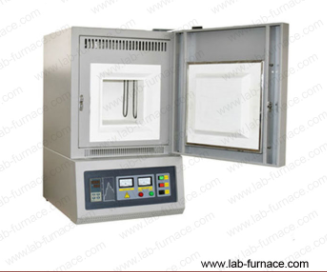


NEWS
The selection of a resistance box furnace (usually referred to as a box type resistance furnace) involves multiple aspects. Let's take a look at what aspects should be paid attention to when choosing a resistance box furnace!

A commonly used small resistance box furnace (click on the image to view product details)
1. Temperature requirements
Maximum operating temperature: Choose the resistance furnace based on the highest temperature required for experimentation or production. Different models of resistance furnaces have different maximum operating temperatures, and it is necessary to ensure that the selected resistance furnace can meet the temperature requirements.
Temperature uniformity: For experiments or production processes that require precise temperature control, a resistance furnace with high temperature uniformity should be selected.
2. Furnace size
Furnace volume: Determine the appropriate furnace volume based on the size and quantity of materials to be processed. Common furnace sizes range from 100 × 100 × 100mm to 1000 × 1000 × 1000mm, and resistance furnaces of different sizes have different heating capacities and powers.
Inner container size: The inner container size directly affects the placement space and heating effect of the material, and needs to be selected according to specific needs.
3. Control accuracy
Temperature control system: Select the corresponding precision control system based on the requirements of temperature control accuracy in experiments or production. A high-precision temperature control system can ensure the stability and reliability of experiments or production processes.
Heating rate: Select a resistance furnace with appropriate heating power and temperature control accuracy according to the requirements of experiments or production for heating rate.
4. Furnace material and heating element
Furnace material: Suitable furnace materials should be selected based on factors such as operating temperature and chemical compatibility. Common furnace materials include ceramic fibers, alumina, graphite, etc., which have different high temperature resistance and chemical stability.
Heating element: Understand the types, quality, and durability of heating elements (such as resistance wires, silicon carbide rods, silicon molybdenum rods, etc.). Different types of heating elements have different heating effects and service lives.
5. Safety and durability
Safety functions: including whether the safety functions such as overheating protection and leakage protection are complete. These safety features ensure the safety and reliability of the resistance furnace during use.
Durability: Consider the overall structure, material, and manufacturing process of the resistance furnace to ensure its good durability and service life.
6. Brand and after-sales service
Brand selection: Choose products from well-known brands with good reputation, which usually provide better quality and after-sales support.
After sales service: Ensure that the manufacturer can provide timely and high-quality after-sales service and technical support. This helps to address potential issues that may arise during use and ensures the long-term stable operation of the resistance furnace.
7. Special functional requirements
According to actual needs, consider whether special functions such as atmosphere control, sealing and vacuuming are needed. These functions can meet the special needs of specific experiments or production processes.
Overall, selecting a suitable resistance box furnace requires comprehensive consideration of multiple factors. Suggest selecting based on specific needs and consulting professionals or manufacturers for more accurate advice.Click to learn more muffle furnaces! Or click on online customer service to learn more about product information!
Leave A Message